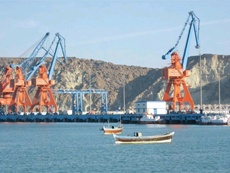China's OBOR seen pushing India’s neighbours to penury
13 Jun 2017
China is using its huge cash surpluses to invest in infrastructure projects in other countries to facilitate trade through its One Belt One Road (OBOR) initiative while making participating nations pay heavily for it, say economists.
 European economists who have analysed the pros and cons of Beijing's One Belt, One Road (OBOR) initiative say it is nothing but a debt instrument – an extended form of the tied-aid of yesteryears.
European economists who have analysed the pros and cons of Beijing's One Belt, One Road (OBOR) initiative say it is nothing but a debt instrument – an extended form of the tied-aid of yesteryears.
China, which saw its economy slowing amidst falling exports is trying to more than make up for lost trade through overseas investments.
News agency ANI on Monday cited the experts as further claiming that the OBOR initiative, which tries to impose Chinese products on participating countries, will push several nations, including Pakistan, towards bankruptcy.
The OBOR has been specifically formulated to add legitimacy to the China Pakistan Economic Corridor (CPEC) that passes through Pakistan-occupied Kashmir and on which India has registered serious concerns.
CPEC is the artery of China's Belt and Road project that aims to connect Asia, Europe and Africa through a network of roads, railway lines, and ports, they add.
China, according to the economists, is charging interest rates of 16 per cent and above for funding made available for OBOR projects like the CPEC, which is untenable as accumulated interests will make repayments difficult.
Any dependence on Chinese funds will push countries like Pakistan, Sri Lanka, Bangladesh and Nepal into an endless debt trap, they say.
On the other hand, the wider use of yuan (Renminbi) funds will boost the Chinese currency's chances of gaining global acceptance like the dollar and the pound.
The UNESCAP report has cautioned that inflows of huge amounts of debt disproportionate to the size of the host economy could pose very high risk. Allowing huge Chinese investments would result in an unsurmountable debt trap for the country concerned.
According to the UNESCAP report, $46 billion CPEC represents a fifth of Pakistan's gross domestic product or GDP if not more.
Similarly, the report cites the $37 billion China-Kazakhstan cooperation agreement signed in late 2014 and early 2015, will have a debilitating impact on the economies in the Central Asian region.
The agreement between Bangladesh and China, according to the UNESCAP report, is worth $24 billion as of October 2016, which is equivalent to almost 20 per cent of Dhaka's GDP.
China's economic presence in Sri Lanka has grown so big – exceeding &60 billion - that the South Asian nation is now trying to convert the debt into equity.
The proposal, if accepted creates the possibility of China owning several key projects coming up in Sri Lanka in the short as well the long term.
China, according to the UNESCAP study, proposes to invest about $4 trillion in OBOR-related infrastructure projects.
The region would require a, estimated $1.6 trillion to $1.7 trillion for infrastructure development annually on average till 2030, according to UNESCAP study.






















